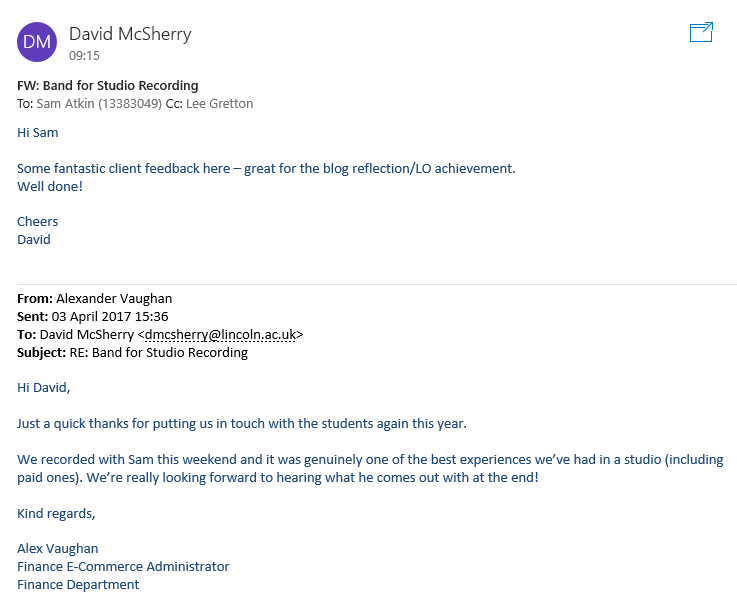Here’s a list of all the key pieces of information I’ve found through research that I’ll apply when mixing the drums and vocals on this project.
Drums
- Pan toms left and right – mentioned by Butch Vig when setting a stereo space for the drums and the rest of the track, by extension.
- Heavy compression on the room microphone, as identified by both Vig and Sheldon. They also note the importance not to over-compress the rest of the kit.
- “It’s also worth compressing the kick and snare drum, but again, don’t overdo it.” – Chris Sheldon’s further thoughts on compression.
- “Hearing the room mics is important. To me, the mid-range frequencies define what the room mics sound like, though these frequencies are also what can clog up a mix, particularly in the 300Hz-500Hz range. ” – Butch Vig on how to place the room mic in a mix.
- “Sometimes I will push up the room mics in calm sections of a song, like breakdowns, and then pull them back when things get dense in the chorus” – Butch Vig on room mic automation.
- Distort the drums and make the level of distortion change in certain sections of the song as in 1979. I may choose to leave this out depending on the rest of the mix.
- Try using a gated snare, such as in 1979.
Vocals
- “You might start with slow compressor, to let the consonants ring through and follow it up with a hard brick-wall limiter at the end, to push everything.” – Chris Sheldon, on adding compression to vocals.
- Limit the dynamic range of vocals if needs be as “in full on rock songs, you don’t want a huge dynamic range on vocals, the vocal needs sit firmly in the middle of everything. So by limiting the dynamic range, you can make sure that it’s neither overbearing, nor hidden.” – Chris Sheldon on compressing vocals.
- Double tracked lead vocal parts will be both central in the mix, which is something that was done by Butch Vig on Drain You by Nirvana. This can be seen in the video at the bottom of this entry.
- The Butch Vig vocals plug-in. I’m going to try using this for vocals to replicate the classic grunge vocal sound, particularly as it seems that it would suit the nature of Ben, YCIALM’s vocalist’s voice
- Backing vocals panned hard left and right as in 1979.
- Set correct delays when using reverbs and delays in order to make the reverbs sound natural with the rest of the song. The reverb on the EP as a whole should be quite dry as is commonly found in grunge.










